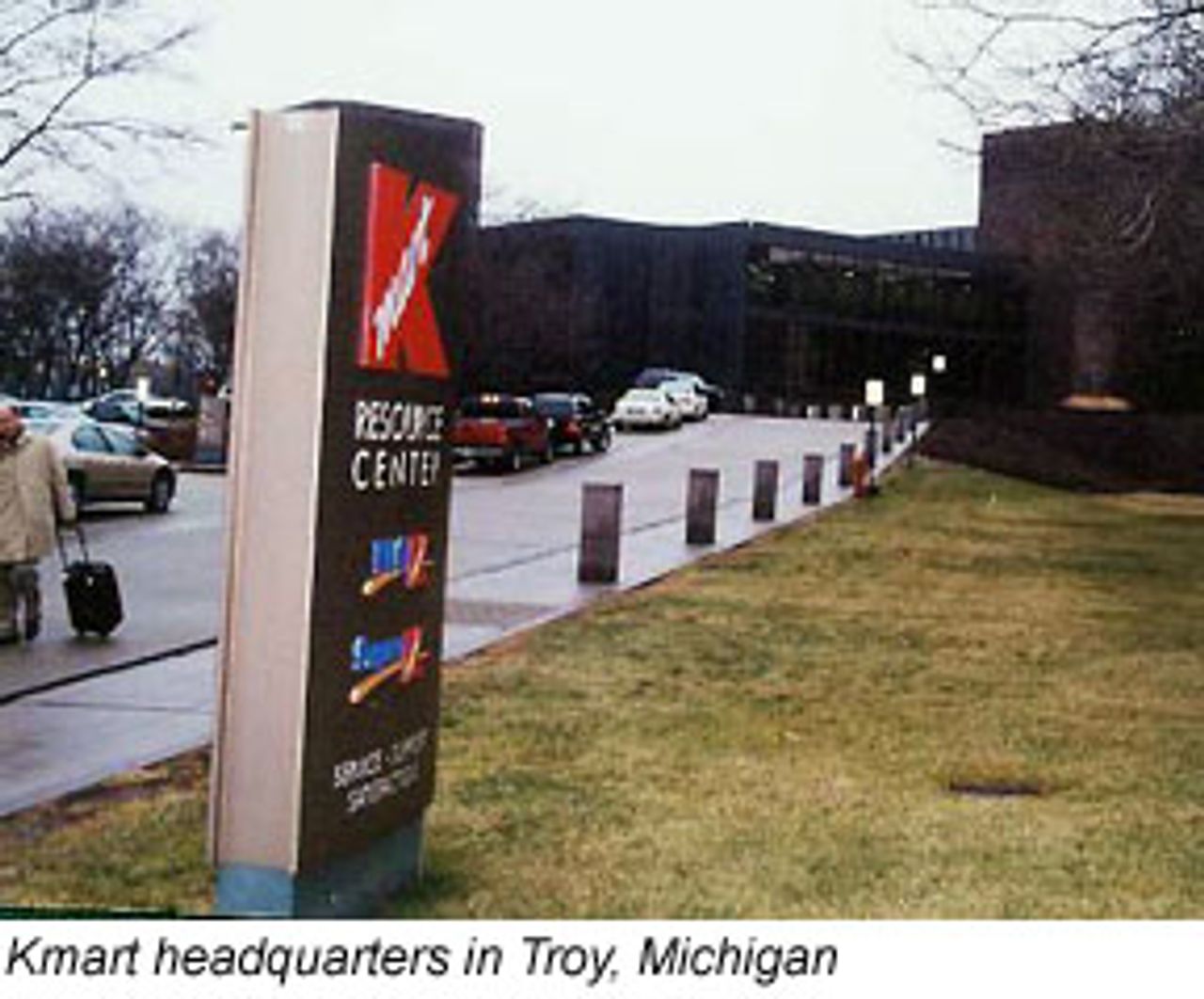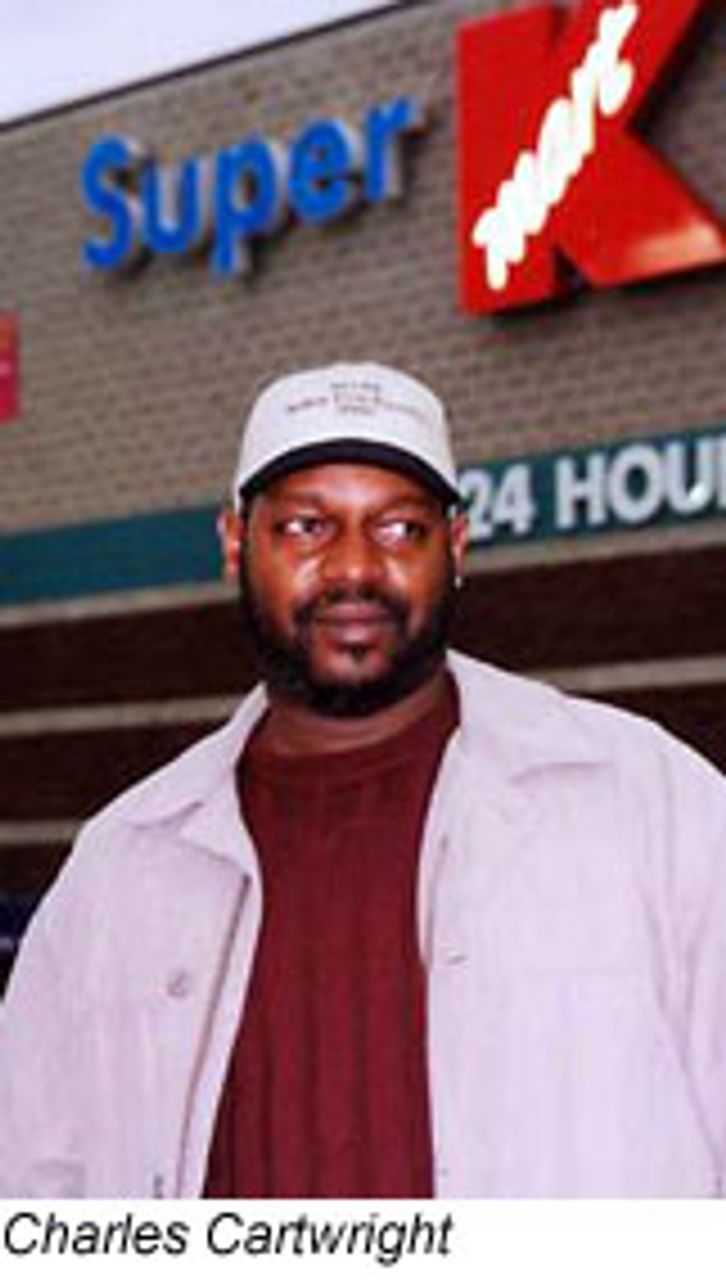Kmart Corporation, the US’s No. 3 discount retailer and an American icon for 40 years, filed for bankruptcy protection under Chapter 11 on Tuesday, January 22.[1]
 The decision followed the dizzying spiral of Kmart stock, which plunged from over $5 a share at the end of December to as low as 68 cents on January 21, after an unprecedented series of downgrades by credit rating agencies Standard & Poor’s and Moody’s Investors Service.
The decision followed the dizzying spiral of Kmart stock, which plunged from over $5 a share at the end of December to as low as 68 cents on January 21, after an unprecedented series of downgrades by credit rating agencies Standard & Poor’s and Moody’s Investors Service.
The manner of Kmart’s collapse is quite peculiar and politically significant. Not surprisingly, this major event is connected to the dominant business question of the day, Enron.
Kmart is the largest retail bankruptcy, by far, in US history, with $16.3 billion in pre-bankruptcy assets. Federated Department Stores, owners of Macys and Burdines, was a distant second with $8 billion in assets during their 1990 bankruptcy.
Kmart is among the oldest retailers in the US, beginning business in 1899 as the S.S. Kresge Company, known as a “five and ten cent store.” In 1962, Kmart was launched as a discount chain. The retailer presently operates 2,114 stores in all 50 states, Puerto Rico, the US Virgin Islands and Guam, and employs about 275,000 workers.
While analysts originally estimated that 250 stores would be shut in the course of reorganization, latest figures suggest as many of 700 facilities may go dark. Between 75 and 250 people are employed in each store.
“I lost everything I had. After 20 years, it’s gone,” Rita Sassin, 55, a cashier at the Roseville, Michigan Kmart store, told the Associated Press. Ms. Sassin has had her hours reduced and benefits cut.
The company plans to review the profitability of each store and announce closures by the end of March, expecting to save $250 million. It also plans to reduce annual expenses by an additional $350 million through consolidations and layoffs. Bankruptcy protection will also allow the termination of unprofitable leases on now-closed stores as well as the “nonperforming” stores they intend to close. There has been speculation that this fact accounts for the less than vigorous response by Kmart’s board of directors to the market assault on stock valuation.
The social cost of Kmart’s dramatic retrenchment will be huge. In the Detroit area, where Kmart employs thousands and is headquartered, families are already deeply affected by automotive layoffs, with both Ford and GM announcing deep-going cuts. Struggling communities across the country will be devastated by the loss of the flagship retailer.
 Most Kmart shoppers are low- and middle-income and have come to depend on neighborhood shopping. Charles Cartwright spoke to the WSWS as he was leaving a store in Detroit. “Kmart has been struggling for quite some time,” said Mr. Cartwright. “I used to work at Kmart. I know a lot of the employees.”
Most Kmart shoppers are low- and middle-income and have come to depend on neighborhood shopping. Charles Cartwright spoke to the WSWS as he was leaving a store in Detroit. “Kmart has been struggling for quite some time,” said Mr. Cartwright. “I used to work at Kmart. I know a lot of the employees.”
Cartwright said they provided good benefits and he did not want to see them go under. “For Detroit it is one of the few retail places to shop. If you go from the east side to the west side, there are not many retail stores to shop in.”
The effect of the bankruptcy will ripple through the entire American economy. Kmart suppliers will have their outstanding receivables frozen, which will remain unpaid until, or if, Kmart emerges from bankruptcy. At that time, creditors will receive only a portion of their original invoices. Even under this optimistic scenario, many business cannot wait that long. The prepackaged bankruptcy plan, which has been filed with US Bankruptcy Judge Susan Pierson Sonderby in Chicago, sets a target date of July 31, 2003 for withdrawal.
At the time of bankruptcy petition, Kmart had $10.2 billion in debt. Its largest creditors include: Bank of New York, $2.37 billion; BankBoston, $119 million; Chase II, $117 million; and BankOne, $66 million. A slew of suppliers have already warned that profits will be hit as a result of the Kmart collapse, with some facing bankruptcy themselves as a result.
“Until Kmart decides what they are going to be, the lives of thousands of people and companies are going to hang in the balance,” said C. Britt Beemer, chairman of America’s Research Group.
Also deeply affected will be the real estate industry, with the termination of at least 350 leases expected immediately. The Wall Street Journal noted that the Kmart decision will “further rattle a retail real estate sector already absorbing a spate of major bankruptcies and liquidations last year.” The Journal cited Montgomery Ward & Co. and Bradlees, which closed more than 350 stores between them, and Richmond, Virginia furniture seller Heilig-Meyers Co., which closed 800 stores.
Kmart’s crisis reflects, at bottom, the precariousness of the economy and impact of the deepening recession which, in turn, intensified competition among the large discounters. It appears Kmart management made a number of miscalculations with regard to archrival mega-chains Wal-Mart and Target.
However, within this context, the Enron affair represented more than the backdrop. In fact, the Kmart crisis—and its huge social costs—is just one more part of the fallout from Enron’s theft on a grand scale.
Enron contributed in two specific ways to Kmart’s bankruptcy. In a statement released after it filed for protection from its creditors, Kmart said the “evaporation of the surety-bond market” was one of the final things that helped to push them over the brink.
Kmart used surety bonds to back up its workers’ compensation self-insurance and liabilities over gun and liquor sales. Surety is a rather obscure form of insurance which functions as a guarantee of contractual relations. It is primarily used in the construction trades to insure completion of work, however Enron utilized the instruments to secure relations with its vendors.
It is now projected that the surety insurance industry will be forced to pay out $2.5 billion as a result of Enron claims. This amounts to more than 75 percent of a year’s premiums for this type of bond. As a result, insurance companies are either discontinuing the surety bonds or demanding huge increases in premiums and cash payments. Rates on bonds have soared 50-1000 percent, according to the Wall Street Journal.
Unable to meet these demands, Kmart was forced to forego surety protection; suppliers balked, refusing to ship. “Their suppliers kind of closed the doors on them,” David Rowley, managing director of insurance broker Marsh USA, told the Boston Globe. “The fact that they couldn’t get surety protection is a direct byproduct of the Enron situation.”
The insurance industry overall has been devastated following the September 11 attacks. Current forecasts now top $40 billion in claims.
The second Enron factor was the unprecedented behavior of business analysts and rating institutions with regard to Kmart. On January 2, Prudential Securities analyst Wayne Hood “shocked the business world” (the informed words of the Wall Street Journal) by stating that Kmart could file bankruptcy if sales didn’t improve. That day, Kmart stock plunged 17 percent. Standard & Poor’s then lowered its credit rating and the company was removed from S&P’s benchmark index of 500 leading stocks. Moody’s Investor Service, the other major credit ratings service, lowered Kmart’s debt two notches, to “junk” status.[2]
Within two weeks, shares plummeted an additional 70 percent, sending the firm’s market capitalization down from $2.7 billion on December 31 to under $900 million. The actions of the credit rating companies, downgrading the corporation so significantly, dramatically forced up Kmart borrowing’s costs.
Ralph Acampora, Prudential’s chief technical analyst, defended the company’s statements that precipitated the present turmoil, with “If they’re starting to break, bail.” But an analyst at the New York Times stated, “Their cash flow model for post-Christmas would have been fine—until Enron scared every last living person in finance out of their wits.”
The mad dash to downgrade Kmart’s ratings has been widely attributed to criticism that the agencies did not cut Enron’s ratings fast enough. The credit rating firms were charged with being either slow to act or in bed with Enron due to their extreme reluctance to downgrade the energy giant sooner and more vigorously. “Major rating agencies have always been reticent to aggressively downgrade,” said Steve Bohlin of Thornburg Investment Management. “This culminated in the embarrassment with Enron, where they knew [a cut to junk status] could put it out of business.”
By contrast, the willingness, if not enthusiasm, with which financial agencies “went for the jugular” at Kmart Corporation is notable. Without the panic run on stock precipitated and perhaps manipulated, Kmart appeared struggling but viable. In fact, on the day of the bankruptcy petition, Kmart’s overall liabilities, at $10.3 billion, were substantially lower than their assets of $16.3 billion.
Crain’s Detroit Business further points out that with inventory levels at $6 billion to $8.3 billion, Kmart should not, under normal circumstances, have had difficulty securing additional lines of credit. Stated Crains, “Kmart’s balance sheet is stronger than it was six years ago, its debt-to-equity ratio is on par with other home-goods retailers, it carries more unique brand names than it used to, and it’s paying vendors faster than most of its competitors.”
But clearly the banks would not provide the necessary increase in credit for Kmart to stem the tide of lower than expected third and fourth quarter sales and a year-end loss of $1.3 billion on sales of $36 billion.
Thousands of workers will bear the brunt of these decisions, reflective once more of the essential anarchy and senselessness of the capitalist organization of society’s resources, where all decisions are subjected to the vicissitudes of Wall Street.
Finally, it should be noted that the new chairman of Kmart’s board, James Adamson, will be paid $4.5 million, with an additional $4 million bonus, if the retailer emerges from bankruptcy next year, a figure that even analysts have called “extraordinary.”
It has also been reported that CEO Chuck Conaway sealed a deal with Kmart’s board of directors the night before the corporation filed for bankruptcy. Under the agreement, Conaway will receive at least $11.5 million, whether the firm climbs back into the black or not. The board agreed to forgive a $5 million loan to the executive made last year as long as he stays with Kmart through July 31, 2003, or even if he is fired “without cause” before then.
The bankruptcy filing also stipulates that Kmart will forgive $2.5 million loans to each of several lower level executives if they remain with the company through January 31, 2004, or if they are fired without cause. This includes at least four executive vice presidents.
The situation will be far different for thousands of Kmart workers and shoppers who depend on the discount chain’s stores. The World Socialist Web Site spoke to Detroit-area residents about their reaction to the Kmart bankruptcy.
 Marlene and Donald Wilson were on their way into the new Super Kmart that opened in Detroit just before Christmas “Everybody has their problems,” said Marlene, “but a lot of people shop here. We love Kmart. The prices are good, everything is here; I can get things for the kids, they have things for women, men. I shop here a lot.” Donald said he also worked at Kmart on a part-time basis and enjoyed it because they provided benefits.
Marlene and Donald Wilson were on their way into the new Super Kmart that opened in Detroit just before Christmas “Everybody has their problems,” said Marlene, “but a lot of people shop here. We love Kmart. The prices are good, everything is here; I can get things for the kids, they have things for women, men. I shop here a lot.” Donald said he also worked at Kmart on a part-time basis and enjoyed it because they provided benefits.
A very smartly dressed woman said she also went through a bankruptcy and thought the company could use it to get their financing in order, as she did. “The difficulty,” she said, “is some people are going to lose their jobs.”
Karla Dudley was shopping with her two children. “Kmart is my favorite store. They can’t close this store. I will come every other day if I have to to keep them in business.” Asked what she liked about Kmart she replied, “Convenience and savings.” Karla commented that she buys all of her kids’ things there and uses the store to shop for food.
Notes:
1. Chapter 11 refers to the portion of the US Bankruptcy Code which provides legal protection from creditors to corporations in the process of reorganizing. A US Trustee, the bankruptcy arm of the Justice Department, appoints one or more committees to represent the interests of creditors and stockholders. The reorganization plan must be accepted by the creditors, bondholders and stockholders and confirmed by the court. (By contrast, Chapter 7 Bankruptcy is an orderly liquidation of business. Should Kmart fail to reemerge from Chapter 11, it could be forced into Chapter 7.)
2. “Junk” is a rating level below than Baa/BBB. Bonds with credit ratings below this level are considered speculative compared with investment grade bonds, i.e., those with a high probability of being paid. Downgrades to “junk” can in some cases legally force investors to sell.
